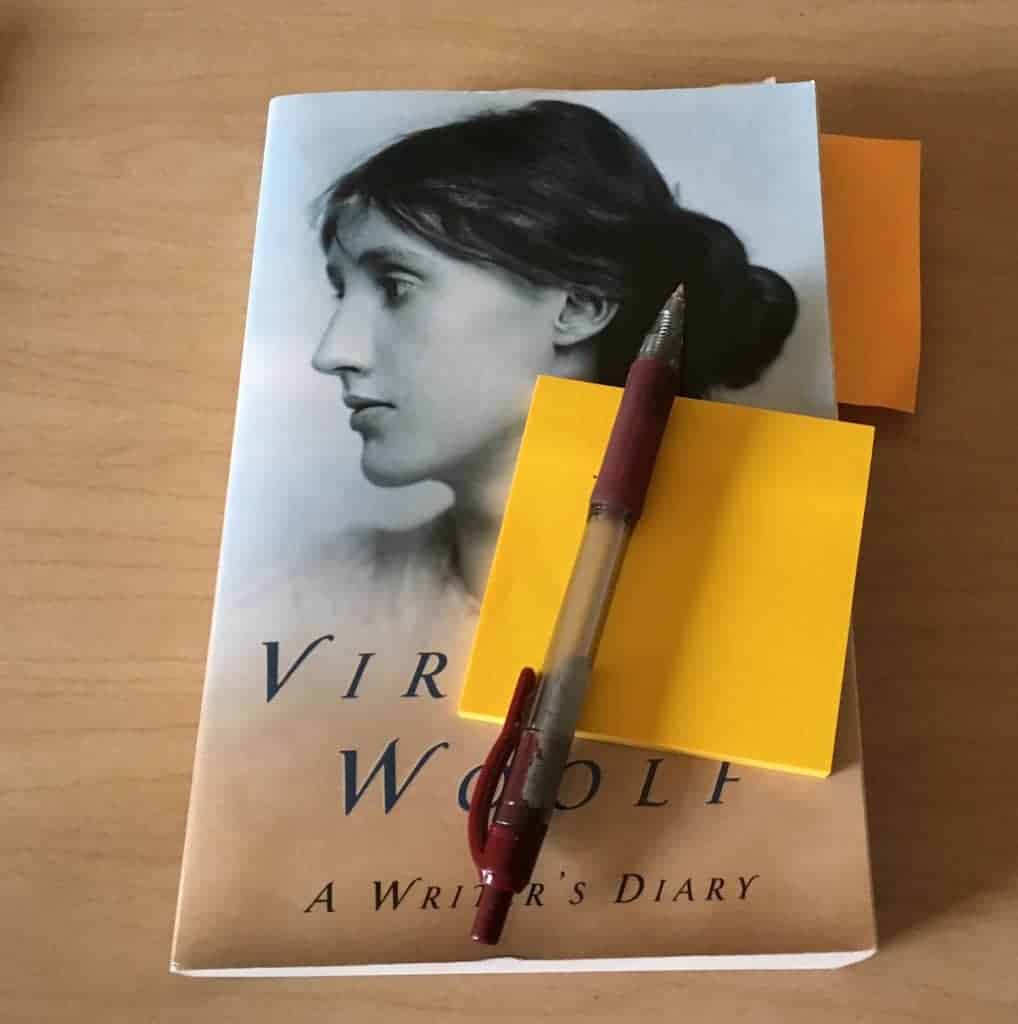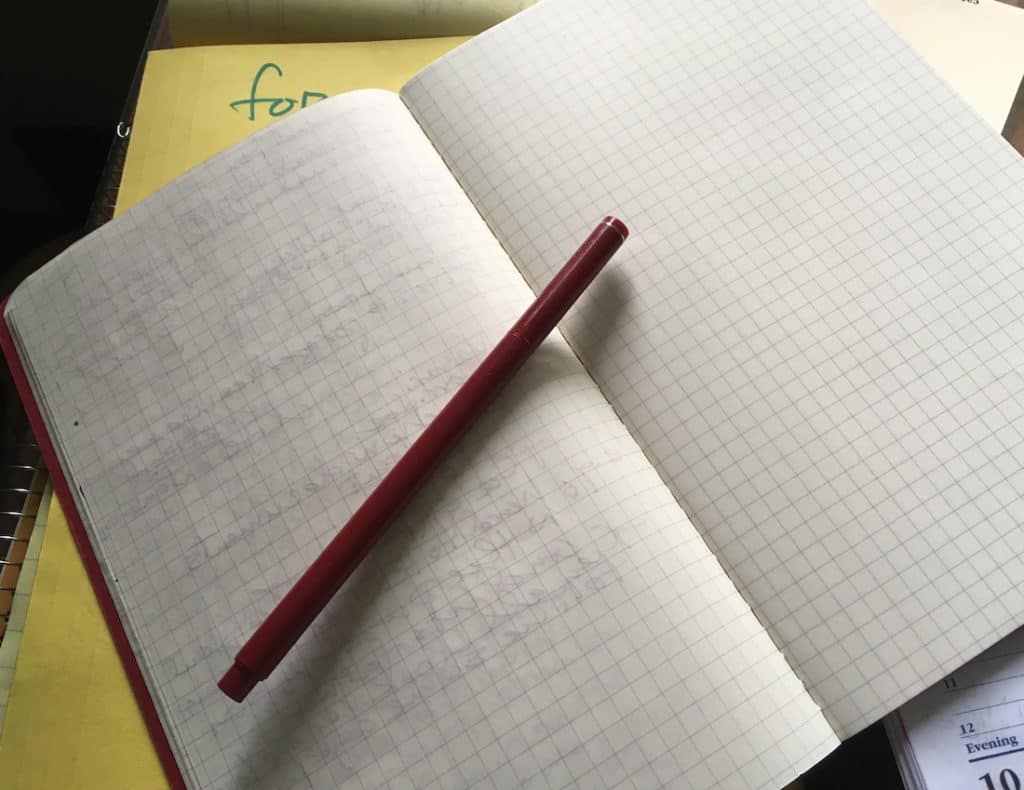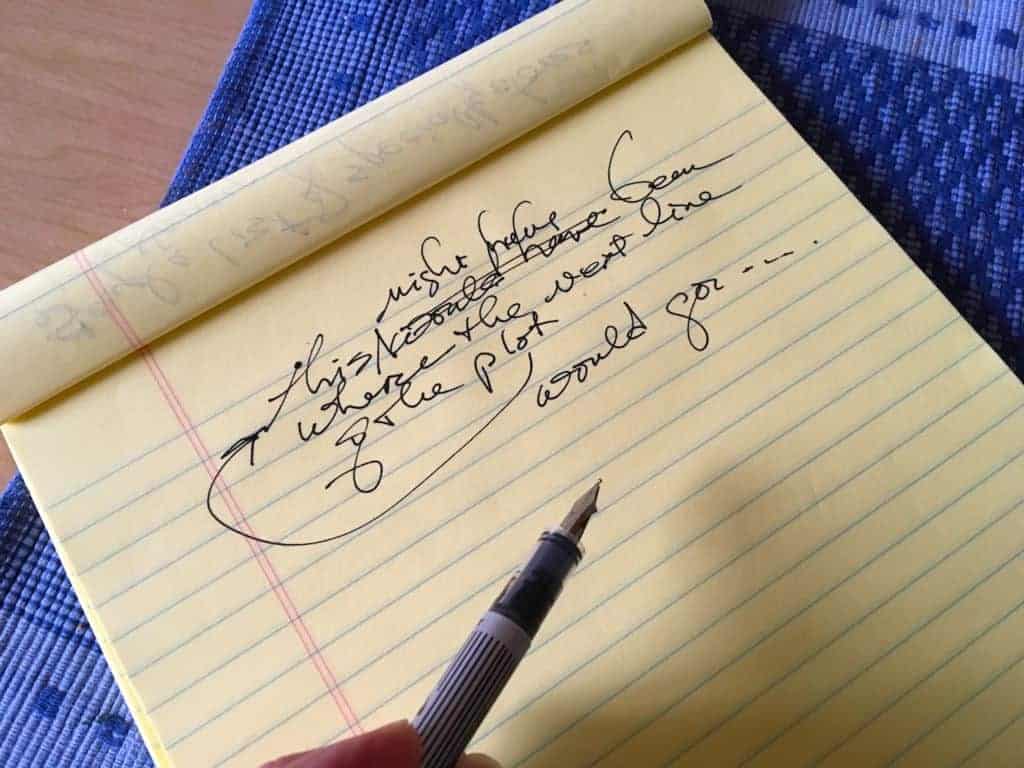
Virginia Woolf used to complain when she ran out of ink, or if she needed a new nib for her pen. Definitely old school. But those of us who write for a living, or out of passion, we each have rituals that not only define our process but which define the outcome as well.

While I was reading Virginia Woolf’s A Writer’s Diary I found myself marking passages (in pencil) in the margins. That became too obscure, so I reached for a pad of orange post-its and began sticking them onto the pages with passages that inspired me, or that shed light on her concerns as a writer. As I read, I always have a small pad of paper nearby— and I make notes of phrases or words that catch my fancy.
This is probably the residue of long years of taking classes where I needed to write important points as I read or else they wouldn’t stick in my brain. Now that habit is firmly fixed. I never read with out a pen in my hand. Or, if I know I’m going to mark and highlight certain pages and passages, I have pencils handy.

Full disclosure: I have arsenals of pens and pencils, paper and pads all over my house, my purse, my car, next to and around my computer. Paper and writing instruments are extensions of my brain, and if used correctly can help to extract satisfying sentences, passages, and critical essays from my consciousness.
And that’s something I share with almost every writer still above ground. Yes, we do use computers, but writing by hand is another form of thinking. How—and upon what—we write helps to determine the outcome, i.e. what is written.
Let me illustrate.
I can type pretty fast—the result of a typing class I took in high school once I’d run out of intriguing electives (already done French and Latin and every music class offered.) Typing quickly without having too look at the keyboard is one of my prized skills, a skill upon which much of my working life has been based.
Because I type so quickly, my thought process is allowed full rein. I can type as fast as the words form, which is a terrific situation when writing journalistic articles, quick pieces that are deadline-driven.
When I’m on the road, traveling, going to some extended destination—in airport waiting areas, for example—I carry a medium-sized moleskine notebook. It is large enough to hold longish sentences and complete thoughts. Often I can work out some experimental idea, try it out on the paper and watch the words arise. I can write quickly too, but not as quick as on a keyboard. I often use red or brown ink. The color of the ink announces that I’m playing, enjoying the dance of the words, of my thoughts—the color lets me avoid being overly serious, overly self conscious.
For thought pieces or reviews—or catalog essays about artwork—I sit on a couch (this is crucial, because moving the writing location is almost as important for inducing new thinking as the writing instrument itself) and grab one of my trusty 8 x 11″ yellow legal pads.

Because this paper is neutral, neither expensive nor particularly textural, simply utilitarian, it moves politely into the background, allowing my thoughts the room and permission to dominate the turf.
Here I write more slowly, enjoying the feeling of the pen in my hand. Usually it is a fountain pen I use—the drag of the nib across paper will definitely slow you down. I favor brown ink in ballpoints, black ink in fountain pens. Never blue ink.
Now the process shifts into high gear. What have I just written, I wonder? Is it any good—will it lead to something full-bodied that can become the piece I hope for?
Well, the only way to really find out is to take the yellow pad—or the moleskine notebook or the covey of rag-tag orange post-its—to my computer. A substantial desktop iMac is my favored final destination for a writing project.
Then I download (upload actually) from writing paper into computer (via my fingers flying along on the keyboard) what I’ve written, exactly as I’ve written it.
If I find myself smiling as I get toward the end of the transcription, I know I’ve got something. I name the file, close it, and walk away. Next time I open the file I read, edit, and almost always flesh out connective tissue. My hands know when it’s finished.
My eyes agree.

